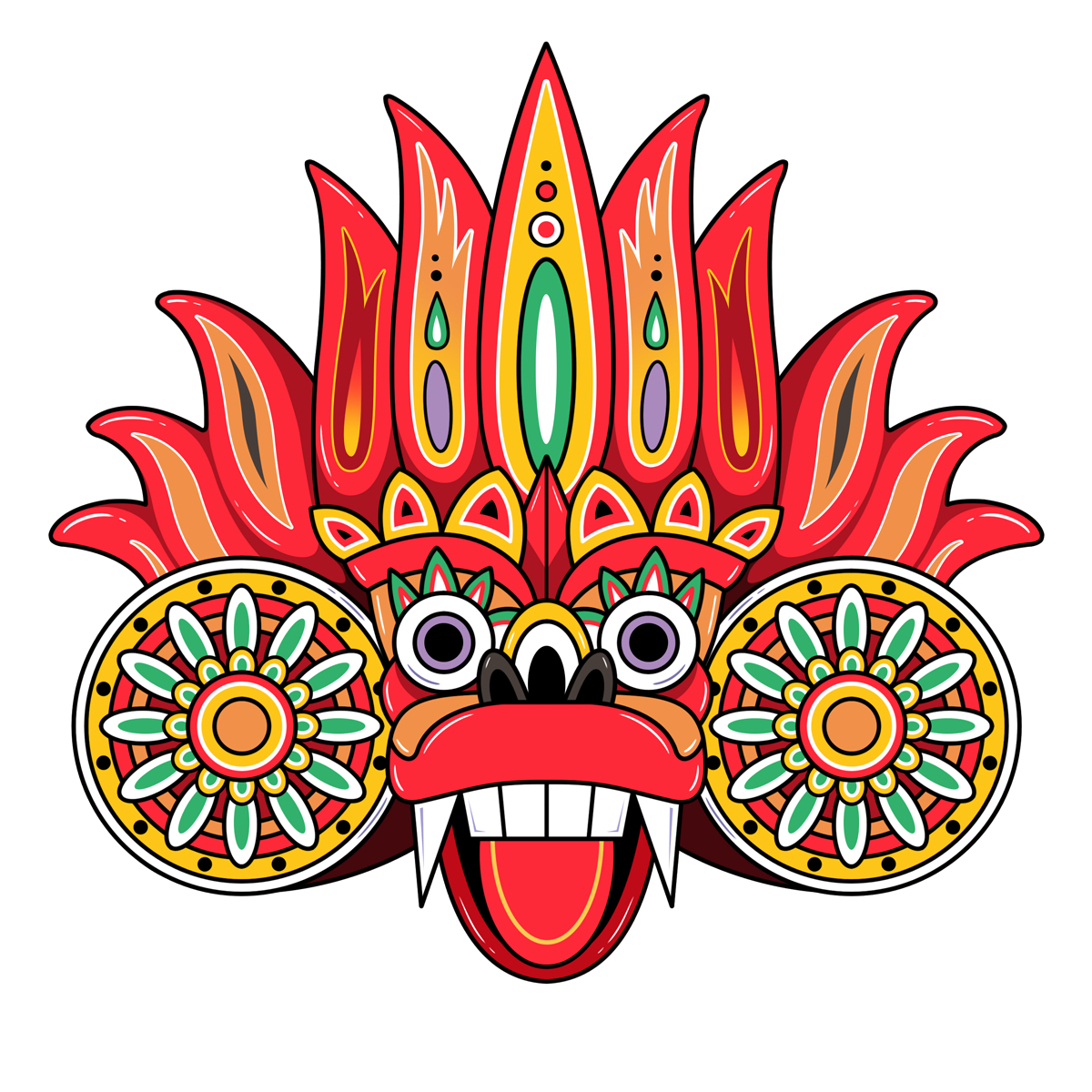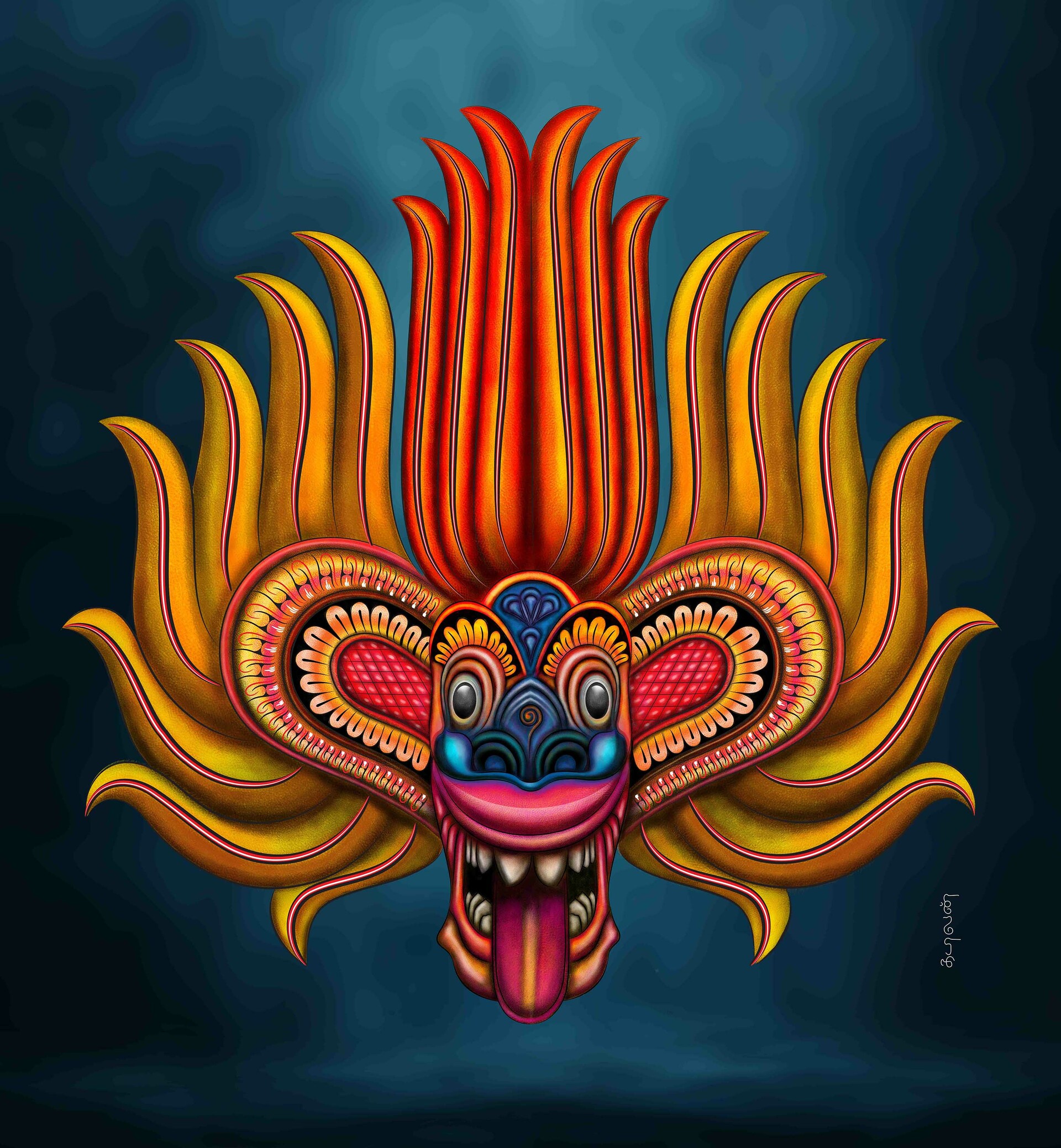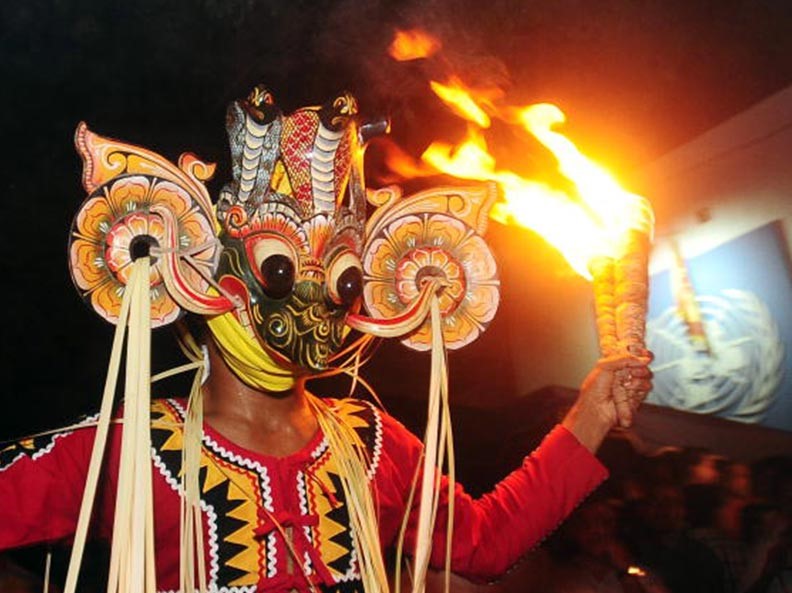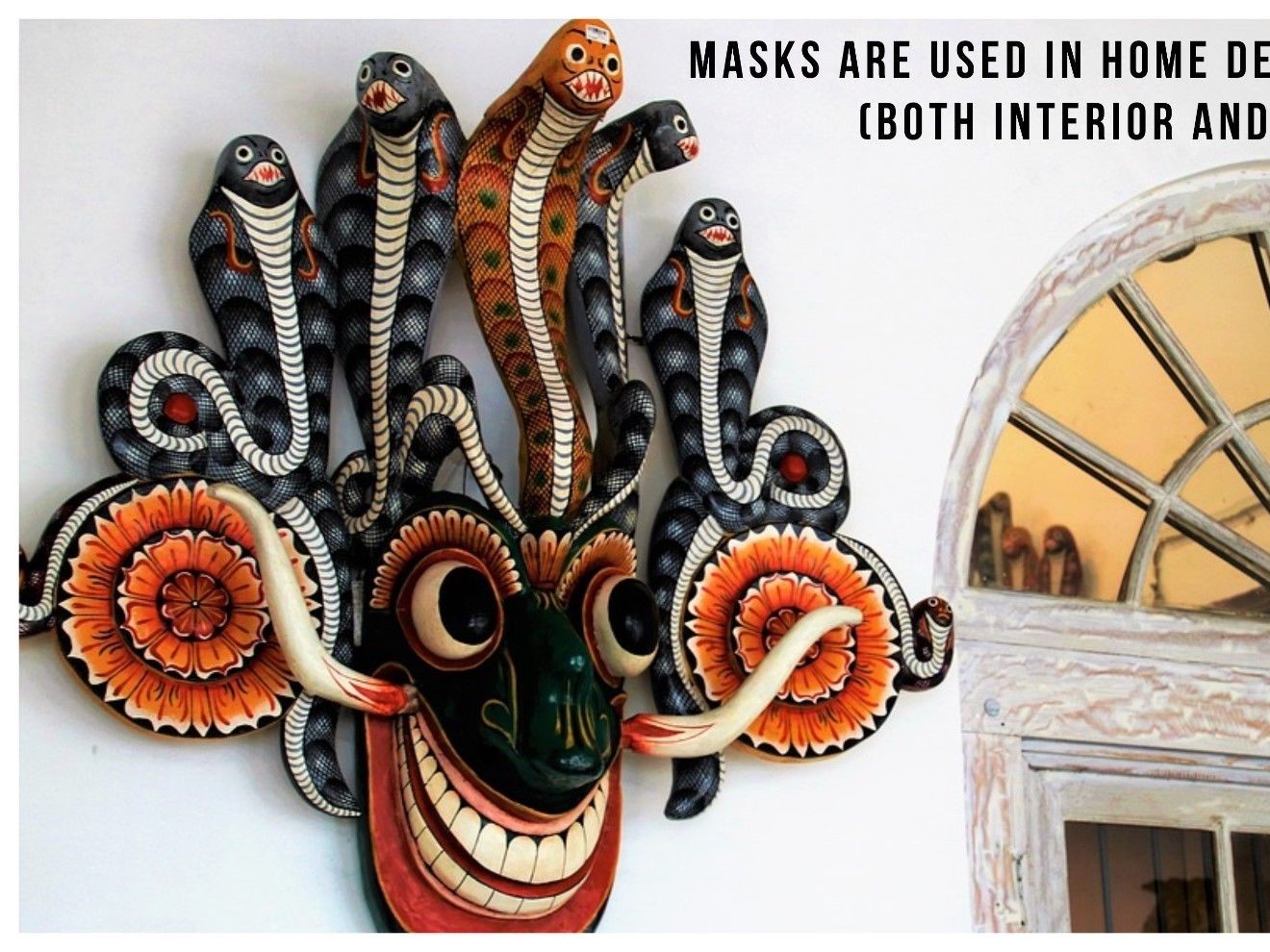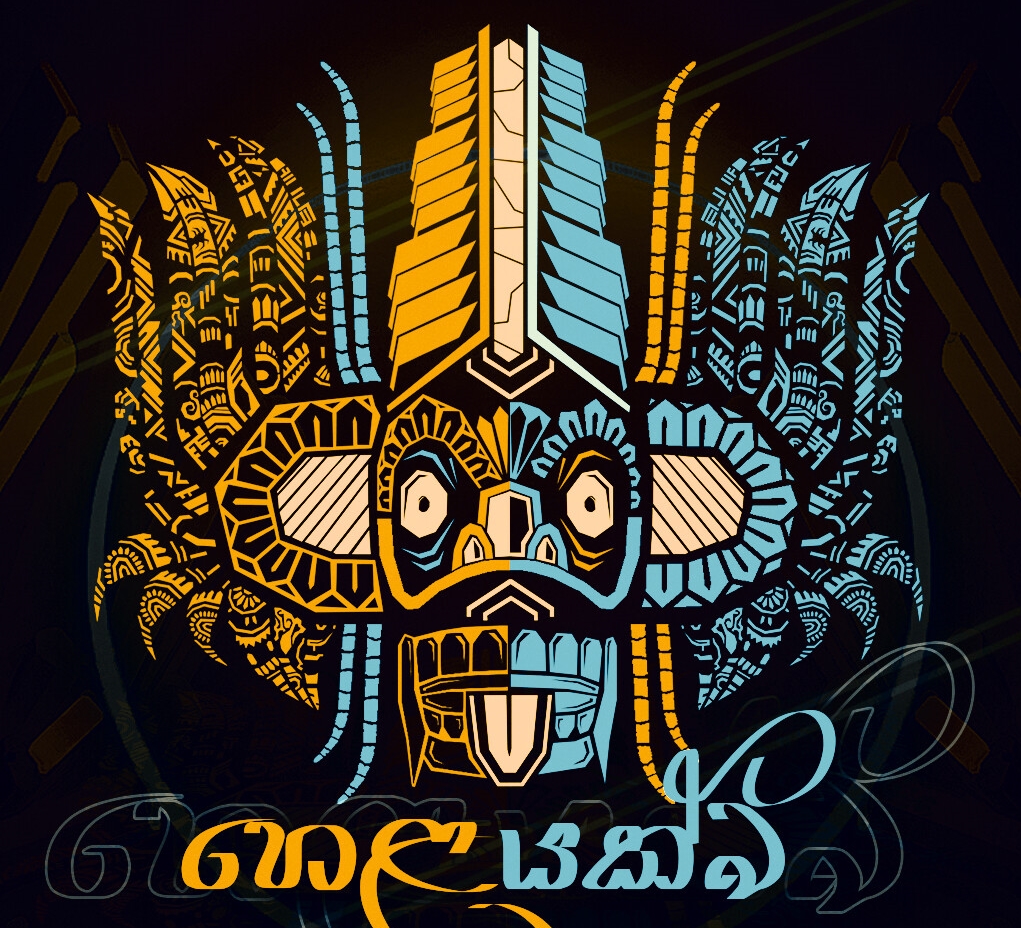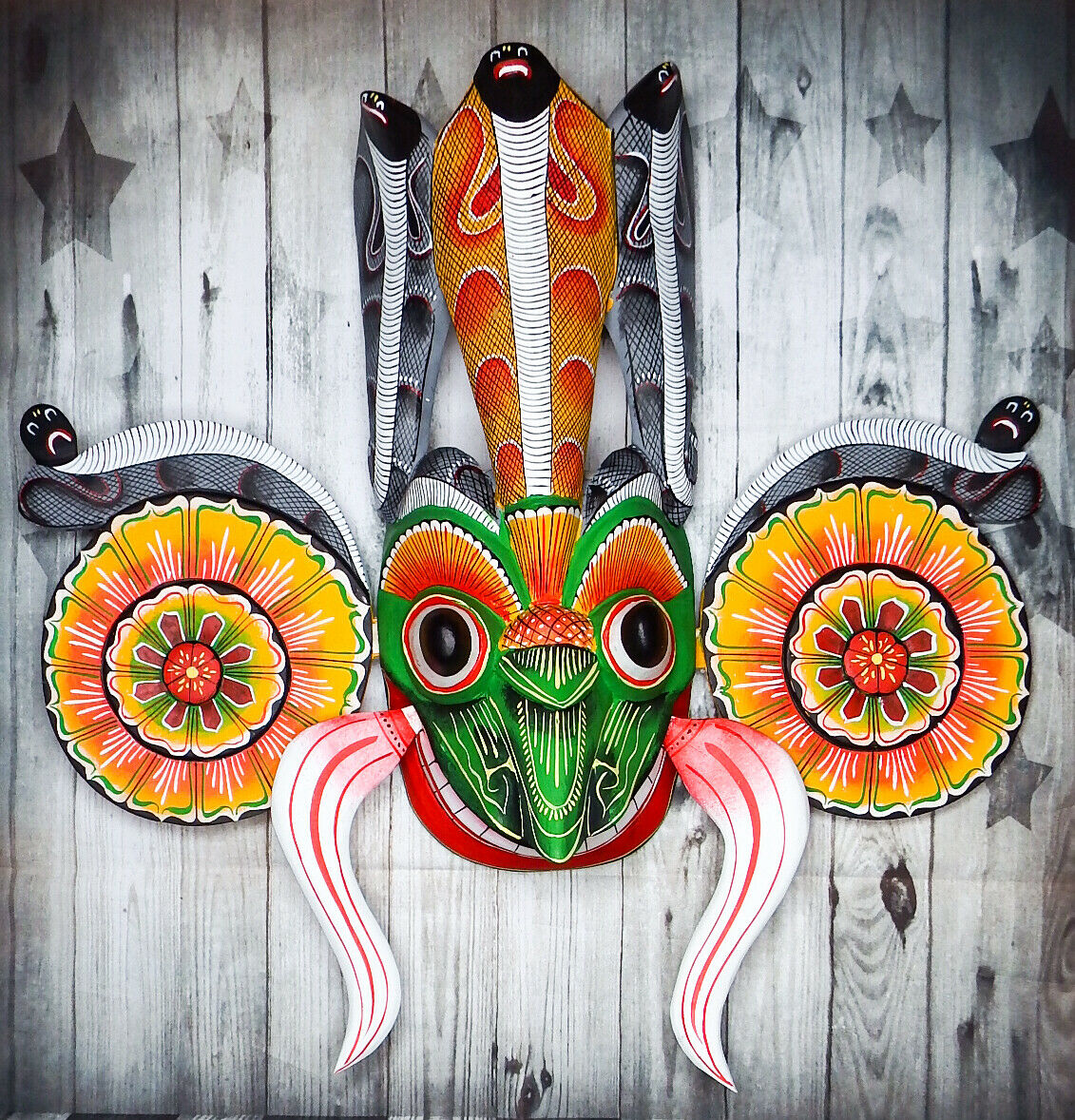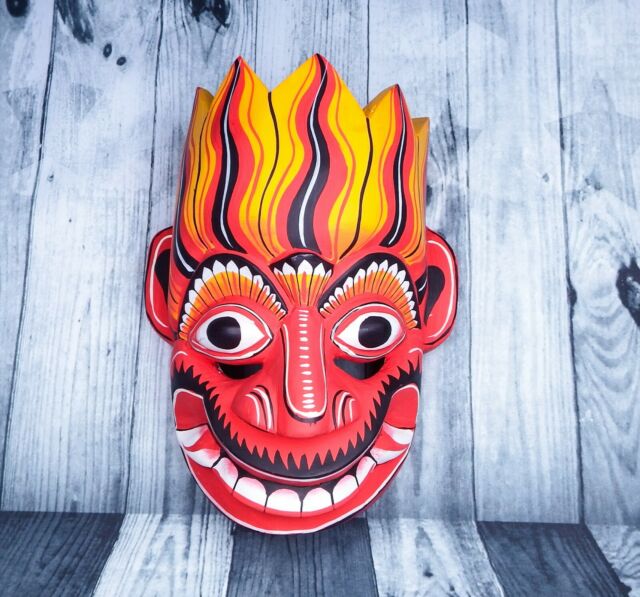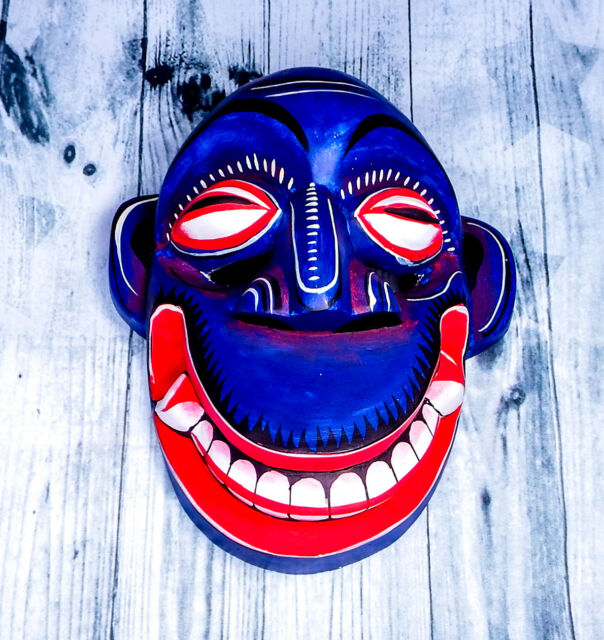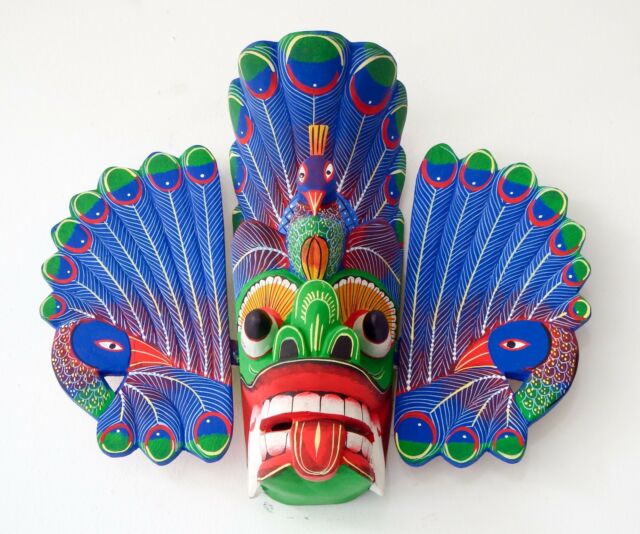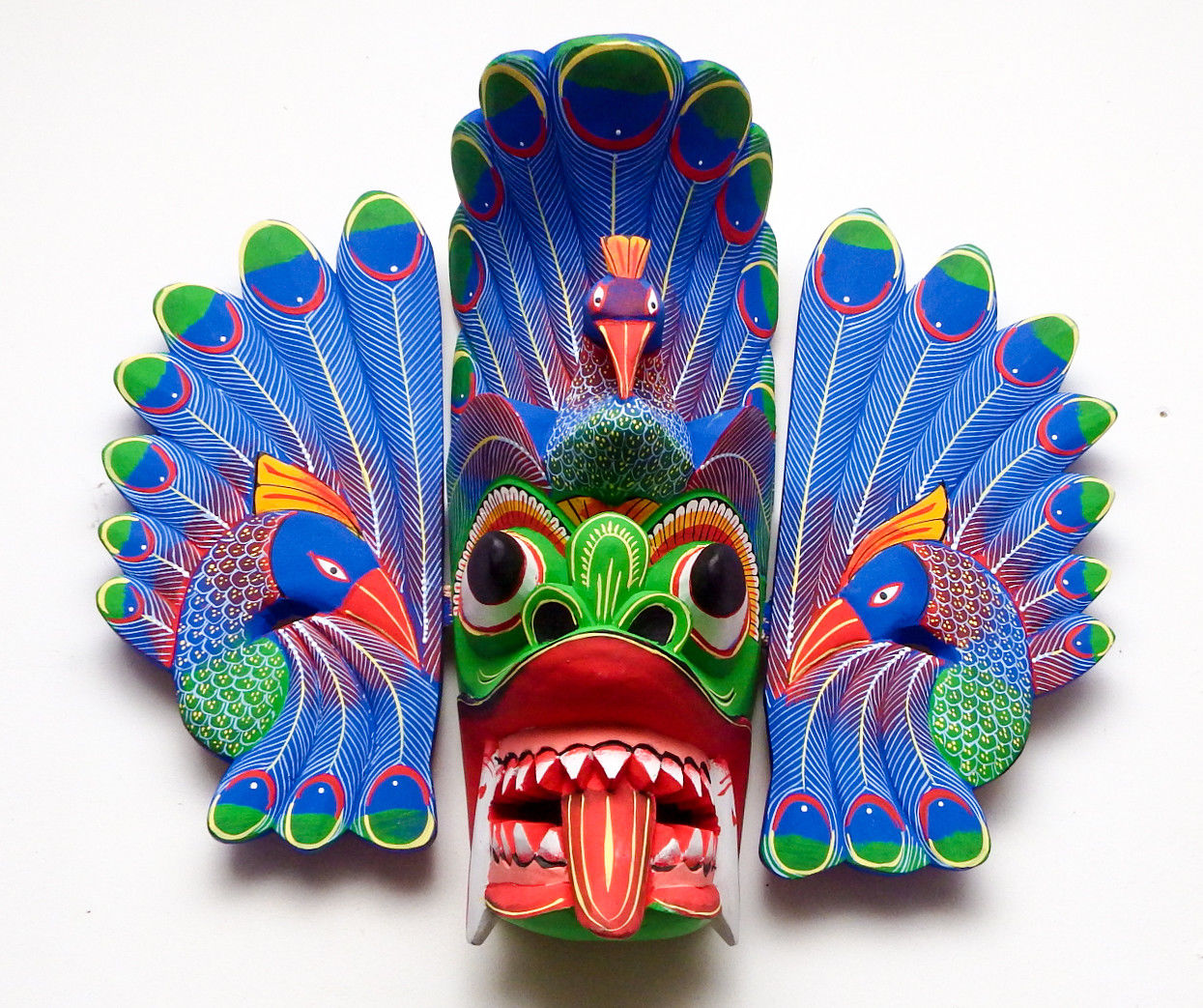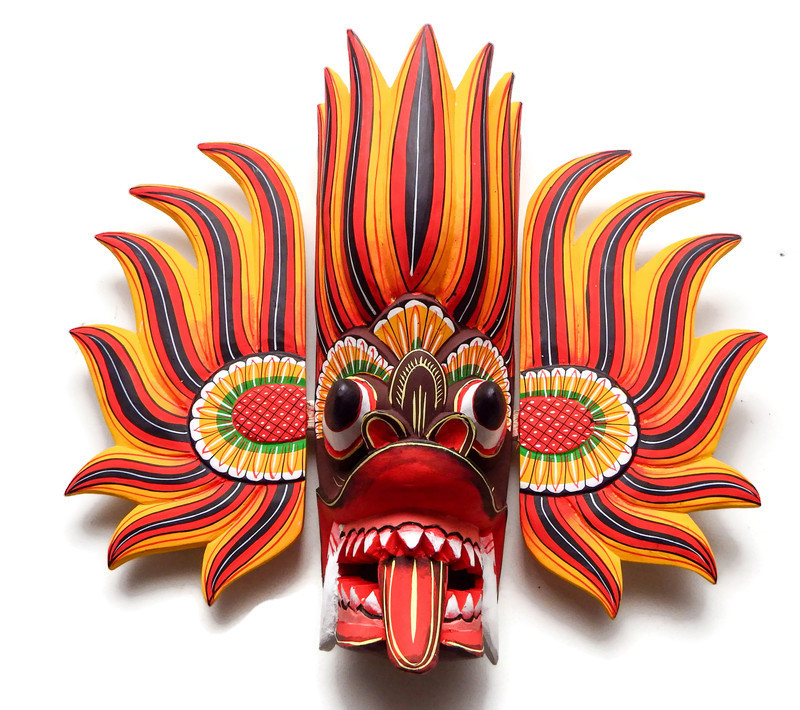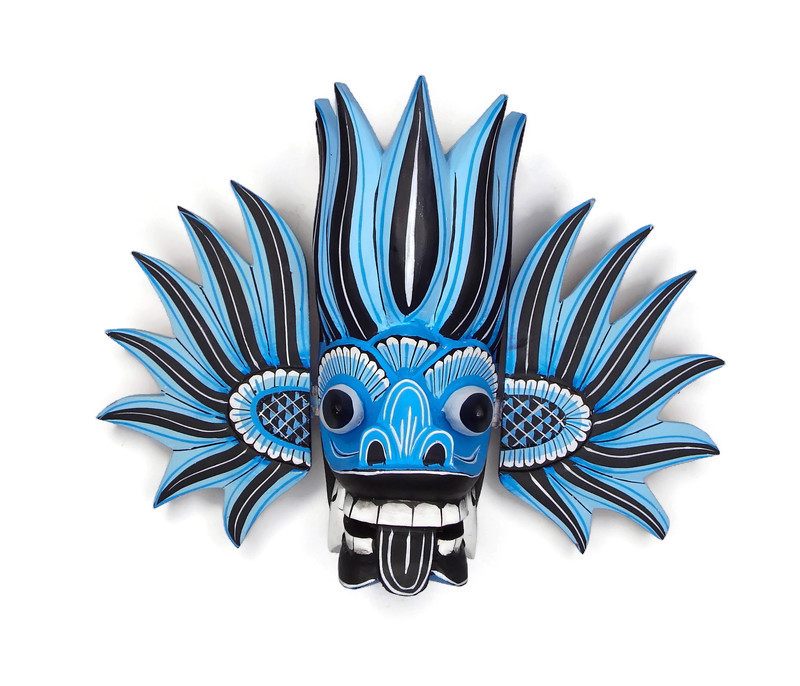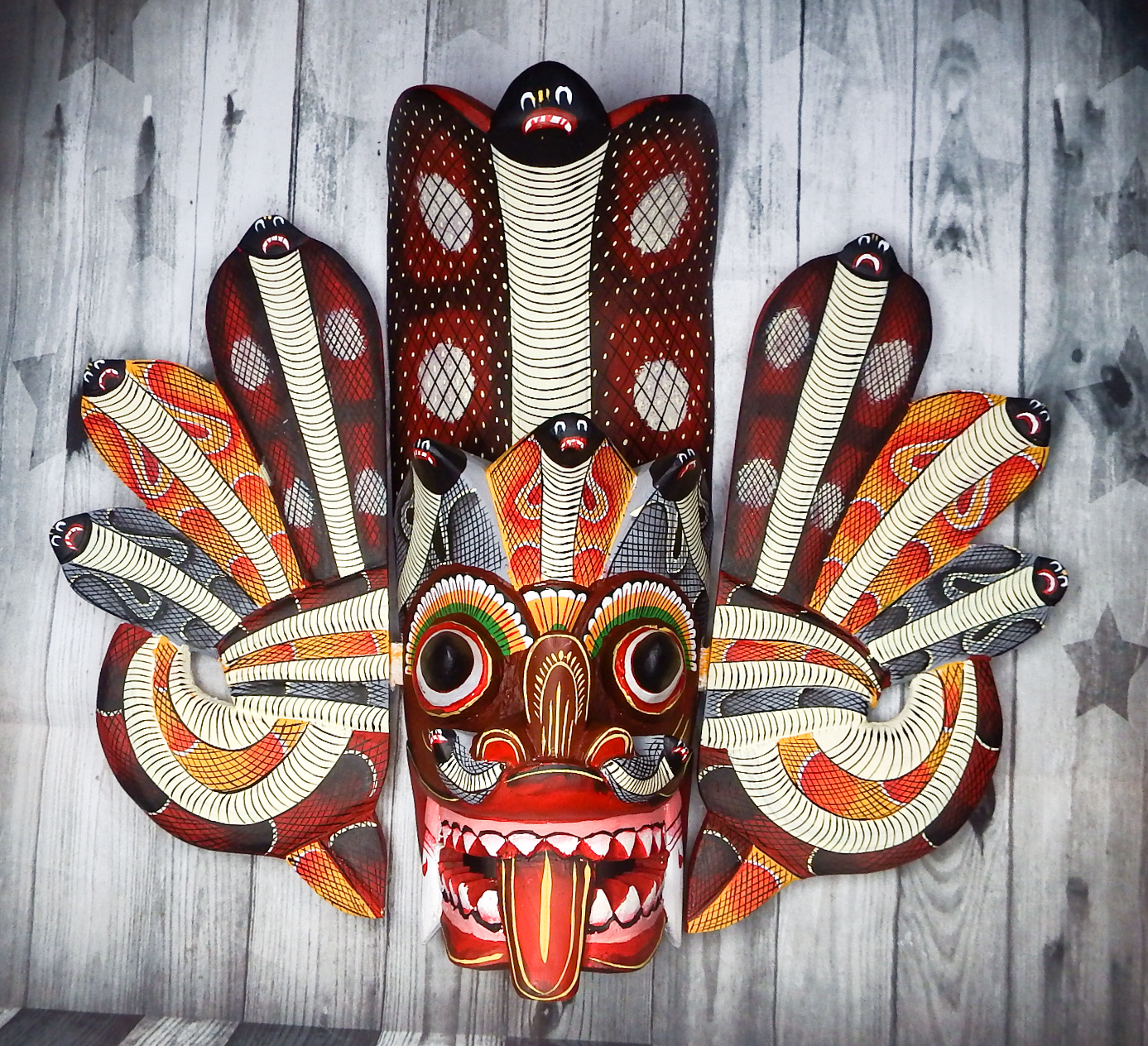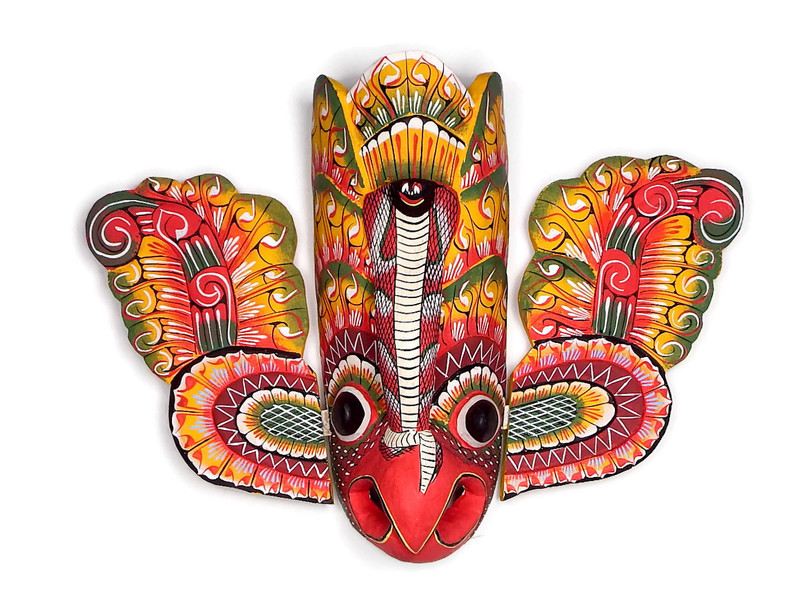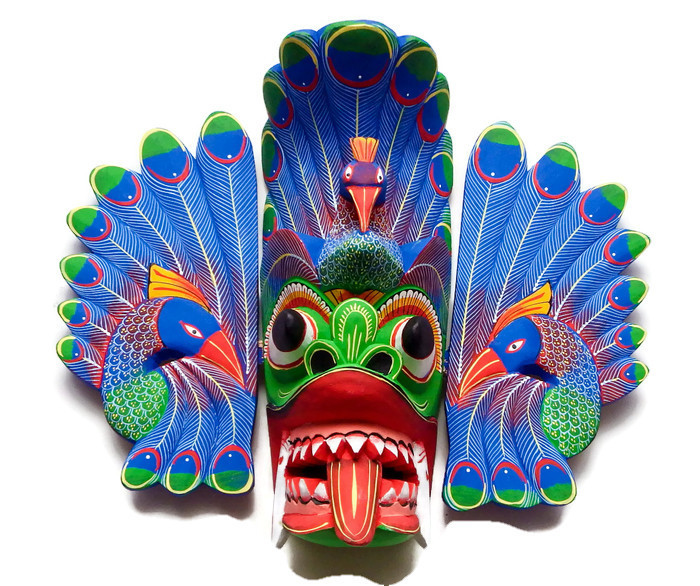Sri Lankan Traditional Devil Dances / Demon Dance Exorcism
“Lady, Poya night, Devil dance, Lady like see?”
It was our appoo (house servant) who spoke, I had commissioned him to a acquire all information concerning the holding of such rites, made up of barbarism, superstition and genuine Oriental occultism.
Yes, “Lady” would “like see.”
-A Devil Dance in Ceylon – New-York tribune, December 03, 1899

Sri Lankan Devil Dancer
A MIDNIGHT ceremony. Crowds milling, bodies slick with sweat in the tropical night. Torches lining an earthen arena. A patient is dazed with illness, propped on a low seat. The rhythmic beat of drums. The smell of smoking resin. A figure enters, back first and the rhythm of the drums changes, intensifies. The figure whirls and the patient is suddenly presented with the face of his tormentor!
The yakun natima, or devil dance ritual of Sri Lanka, is nothing if not full of drama. Not just a charade or interval designed to entertain, the yakun natima is a carefully crafted ritual with a history reaching far back into Sri Lanka’s pre-Buddhist past. It combines ancient Ayurvedic concepts of disease causation with deftpsychological manipulation. Lasting up to twelve hours, it mixes raucous humour with deep-rooted fears to create a healing catharsis for both patient and community.
For the ethnographer, the traditional belief systems and practices surrounding the yakun natima and other Masked dance rituals of Sri Lanka’s southern coast provide a rich and fascinating field for research. For the collector, these ritual masks represent a sophisticated folk art form; beautiful and mysterious. Carved of wood and pigmented with natural hues and resins, these masks are infused with a spirit and animation which command attention. The patination of a ritual mask, darkened by years of use, and the repairs upon repairs of cherished examples bespeak their importance within their village communities. Within the context of the dance they are hypnotising. Taken out of that context and viewed on their own they are masterpieces of a rich folk art tradition (3).
To look at a complete collection of late nineteenth century ritual dance masks provides insight into the imagery and beauty that are the essence of these powerful spiritual talismans.
The masks used in the exercise of so called demon dance exorcism are so grotesque, the dance itself is utterly devilish to the breakneck pace of the explosive drums, the whole exercise would halt the march of folly of evil itself, the long strides of the devil himself. If so the, the aim achieved (didn't we say, we aim to please), all would be in fine fettle, every thing would be in ship shape, all chicks in fine fettle & all would be happy & jolly. It cannot get any sweeter, isn't it?
The “Devil Dances” are an attempt to respond to the common belief that certain ailments are caused by unseen hands and that they should be chased away for the patient to get cured. If an individual or a family is not doing well, the village-folk believe that it’s because that person or the family is being harassed by unseen hands. A ‘thovil’ ceremony is the answer.
The ‘thovil’ can be a simple ritualistic ceremony at home restricted to family and immediate neighbors or involving the whole village like the ‘gam-maduva’ or the ‘devol-maduva’ which is closely linked to the worship of gods. Masked dancers take part in at least two of the well-known ‘thovil’ ceremonies referred to as the ‘Maha Sohon Samayama’ and the ‘Gara Yakuma’. The mention of ‘Maha Sohona’ frightens the people since he is believed to be the demon of the graveyards.
The performer disguises himself as a bear and wears a mask and a dress to resemble one. Often the ‘thovil’ involves the ‘sanni’ dances where all the dancers wear masks. The ‘daha ata sanniya’ refers to sixteen ailments with a demon being responsible for each one of them.
Dancers wearing masks take part in processions while at certain ceremonies, masks are used to depict different characters. Of later origin are the masks worn by children and teenagers at street performances during Vesak. Popularly known as ‘olu bakko’ for the simple reason that oversize masks are worn, these performances keep the younger-folk, in particular, entertained.
The simple version of the devil dance ritual usually starts in the morning with the building of the stage, decorations and preparation of the costumes. The performers build an intricate stage before which the dancing commences. The stage consists of a wall made of freshly cut natural materials such as coconut palm tree and banana tree trunks. Depending on the region and the available materials the stage may also be coated with clay mud. The dances are accompanied by drummers which also herald the begin of the ritual. The distinctive sound ensures all neighbors turn up to take part. The full ritual usually lasts until the morning, with the dancers consuming betel-nut juice and drinking coke to stay awake. Dances can however also go on for multiple days.
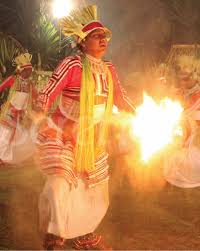
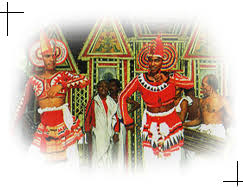

Legend of the Rakshasas
Legend has it that Sri Lanka was once ruled by a race called the Rakshasas. The Rakshasas could turn themselves into cobras. The cobras would capture the enemies of the Rakshasas and turn them into slaves.
Wooden Raksha masks are used to recount the tales of the Rakshasas in a comical Kolam Dance performance.
Cannabis Dances with the Devil
Few have heard of, fewer still have witnessed, Cannabis Dancing with the Devil…
For thousands of years a dance rooted from sacred rites has been performed to fight off demons and even the Devil himself…
Cannabis’s role in the Devils Dance? Only to help communicate to different worlds/realities, compelling the Demon…
Performed by a Kattadiya (Ceylon Priest) dawning a ornate devilish mask, the dance of the devil begins…

Devil Dancers, Sri Lanka 1910
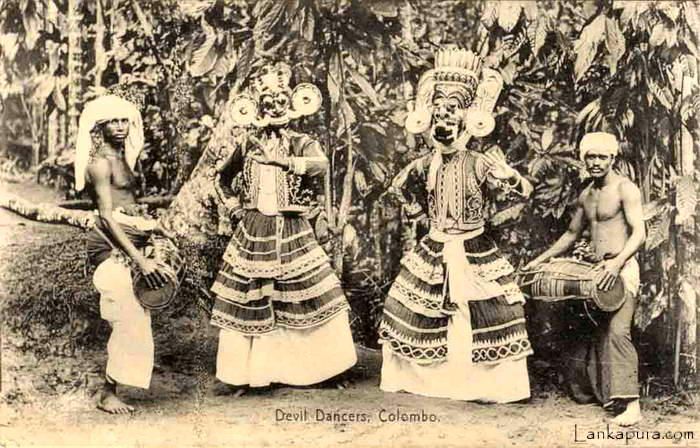
In ancient Ceylon (present day Sri Lanka), the Kattadiya appears as the pulse of drums begin the Devils Dance…
Like a being possessed, the Kattadiya dances around flailing in his quick movements to the rhythmic beating of the drums. The Kattadiya is joined by more devil dancers dawning mask’s of evil looking intent…
Sometimes lasting more then 12 hours, the beating drums and dancing intensifies only stopping for the Kattadiya to perform his ritual’s.

Hooniyan Kerema (notice the plumes of narcotic smoke) “a pumpkin was cut in halves, the Kattadiya meanwhile commanding the last departing demon to enter therein and take up his abode…. After a few minutes the pumpkin was flung into the sea.”
“Dummala, a species of very inflammable rosin, the gum of the Sal tree, Gungah, Indain hemp, and other drugs and narcotics best not to mention, in chetties were placed around the patient, who presently became wellnigh obscured by their fumes.”
-A Devil Dance in Ceylon – New-York tribune, December 03, 1899
Sanni Yakun Neteena aka Sanni Yakuma or “woman made sick by an obsessing demon”
When a person is possessed by a Demon, a Sanni Yakuma is performed in the Devil Dance.
The Sanni Yakuma starts late into the night at the frenzy of the Devils Dance…
Wrapping a thread blessed by a virgin around the person, a concoction of narcotics (whose main ingredient is Cannabis) are lit around the patient laying on their back, engulfing the room in fumes.
As a curtain of cannabis infused fumes rise around the patient, both the Kattadiya and possessing Demon can now communicate…
 ht
ht
Tibetan Devil Dancer
“The patient was certainly changed- a different being apparently. All that defiant, evil glare was gone from her eyes… Her first expression was one of astonishment, bewilderment indeed for a second or two, then her impulse was to go and seek seclusion. But to this the Kattadiya objected. She must remain in a humble, suppliant posture until the following was intoned in a jargon half Tamil, Half Singhalese:”
“O Brahma, Siva, Vishnu, O Walia, come! Come, Hanumantu: Come, all ye gods. Ye demons, be bound, be confined, be conquered. Be subservient to our will. By the power of Vishnu I compel ye: I and the higher gods (devas) are one. O Demon Reeri Yakseya, be bound by this charm: by our will I command.”
-A Devil Dance in Ceylon – New-York tribune, December 03, 1899
Devil Dance, yakun natima of Sri Lanka (notice the smoking ‘incense’ the devil is offered and takes a big inhale of at 2:19…

The Dance of the Devil can be found in cultures spanning around the world cut off from each other for thousands of years…
High up in Tibet the practice has some of its oldest roots. The Ancient Aztec would Dance with the Devil in the Oaxaca mountains in Mexico. And even the Native American Apache’s dare to Dance with the Devil in the Arizona desert…
With so many beliefs, customs and practices around the world, Cannabis again connects us all…
 https://i2.wp.com/www.thecannachronicles.com/wp-
https://i2.wp.com/www.thecannachronicles.com/wp-
Characters in Tibetan dance drama ‘Milarepa’ or ‘devil dance’ at Labrang Monastery 1932/1933
New-York tribune., December 03, 1899










